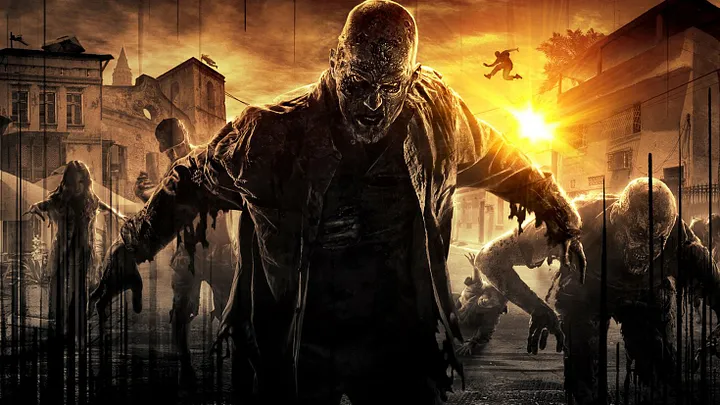As technology continues to advance at a rapid pace, its influence on the development costs of horror games becomes increasingly pronounced. From sophisticated graphics engines to immersive sound design tools, the adoption of cutting-edge technologies significantly shapes both the production process and the overall financial investment required to bring a horror game to life.
A recent survey by Statista revealed that The Video Games market in the United States is projected to reach a revenue of US$78.01bn by 2024! This staggering figure underscores the immense growth potential of the gaming industry and highlights the substantial financial stakes involved in game development, particularly within the horror genre.
Innovations in game development tools and software have revolutionized the way horror games are created, enabling developers to achieve higher levels of realism and immersion than ever before. However, with these advancements come increased development costs, as developers must invest in the latest hardware, software licenses, and talent to remain competitive in the market.
Despite the challenges posed by rising development costs, technological advancements have also opened up new opportunities for indie developers to enter the horror game market. With access to affordable game engines, online resources, and distribution platforms, indie studios can now create high-quality horror experiences with relatively modest budgets, challenging the dominance of traditional AAA developers.
The Evolution of Graphics Technology in Horror Game Development
Advancements in graphics technology have revolutionized horror game development, enabling developers to craft visually stunning and immersive experiences that plunge players into chilling worlds. With the advent of photorealistic rendering engines and sophisticated lighting techniques, horror games now boast unparalleled levels of realism and atmosphere, intensifying the fear and suspense experienced by players.
This technological progress has not only transformed the landscape of horror game development but has also democratized the industry, granting indie developers the power to create captivating horror experiences with minimal resources. Accessible game engines and online tutorials provide indie studios with the tools and knowledge needed to breathe life into their creative visions, fostering diversity and innovation within the horror game genre.
Beyond enhancing visual fidelity, advancements in graphics technology have opened doors to new narrative and gameplay opportunities in the horror genre. By crafting intricate environments and lifelike character models, developers can immerse players in intricately woven stories and gameplay mechanics that blur the boundaries between reality and fantasy.
These technological advancements mark a pivotal moment in horror game development, empowering developers of all sizes to push the boundaries of creativity and deliver unforgettable gaming experiences to players worldwide.
The Role of Sound Design in Immersive Horror Experiences
Sound design plays a crucial role in shaping the atmosphere and immersion of horror games, complementing the visual elements to create truly spine-chilling experiences for players. From eerie ambient sounds to bone-chilling sound effects, audio cues are carefully crafted to evoke fear and suspense, heightening the intensity of gameplay.
Immersive soundscapes can transport players to the heart of the horror, enveloping them in a world where every creak and whisper sends shivers down their spine. By leveraging advanced audio technologies and techniques, developers can create dynamic soundscapes that react to player actions, intensifying the sense of dread and uncertainty.
Moreover, sound design serves as a powerful storytelling tool, conveying narrative elements and character emotions through audio cues and dialogue. By orchestrating a symphony of sound, developers can immerse players in the unfolding story, eliciting emotional responses and deepening their connection to the game world.
Exploring Psychological Horror in Game Design
Psychological horror games delve into the depths of the human psyche, exploiting fears and anxieties to create immersive and unsettling experiences for players. Unlike traditional horror games that rely on jump scares and gore, psychological horror focuses on psychological torment, leaving a lasting impact on players long after they’ve put down the controller.
In these games, atmosphere is paramount, with developers leveraging sound, lighting, and environmental storytelling to create a sense of unease and dread. By immersing players in a world where reality is distorted and perception is unreliable, psychological horror games blur the line between fantasy and reality, heightening the sense of fear and uncertainty.
Moreover, psychological horror games often feature complex narratives that explore themes of isolation, paranoia, and existential dread. Through interactive storytelling and player choices, developers can craft deeply immersive experiences that challenge players to confront their deepest fears and darkest impulses.
- Emphasize atmosphere and immersion to create a sense of unease and dread.
- Craft complex narratives that explore themes of isolation, paranoia, and existential dread.
- Utilize interactive storytelling and player choices to deepen immersion and engagement.
Exploring Psychological Horror in Game Design
Psychological horror games delve into the depths of the human psyche, exploiting fears and anxieties to create immersive and unsettling experiences for players. Unlike traditional horror games that rely on jump scares and gore, psychological horror focuses on psychological torment, leaving a lasting impact on players long after they’ve put down the controller.
In these games, atmosphere is paramount, with developers leveraging sound, lighting, and environmental storytelling to create a sense of unease and dread. By immersing players in a world where reality is distorted and perception is unreliable, psychological horror games blur the line between fantasy and reality, heightening the sense of fear and uncertainty.
- Emphasize atmosphere and immersion to create a sense of unease and dread.
- Craft complex narratives that explore themes of isolation, paranoia, and existential dread.
- Utilize interactive storytelling and player choices to deepen immersion and engagement.
Psychological horror games often feature complex narratives that explore themes of isolation, paranoia, and existential dread. Through interactive storytelling and player choices, developers can craft deeply immersive experiences that challenge players to confront their deepest fears and darkest impulses.
Psychological horror games employ gameplay mechanics that heighten tension and evoke psychological unease. From limited resources and challenging puzzles to moral dilemmas and psychological manipulation, these mechanics keep players on edge, intensifying the immersive experience.
Creating Immersive Environments in Psychological Horror Games
Crafting immersive environments is essential in psychological horror games, as they serve as the foundation for evoking fear and tension in players. From eerie abandoned buildings to claustrophobic underground tunnels, each environment is meticulously designed to immerse players in a world of psychological torment.
These environments are brought to life through a combination of atmospheric storytelling, detailed visuals, and dynamic sound design, enveloping players in a palpable sense of dread and unease.
- Environment Design: Carefully construct environments that reflect the themes and tone of the game.
- Lighting and Shadows: Use lighting and shadows to create atmosphere and enhance immersion.
- Audio Design: Utilize sound effects and ambient sounds to evoke emotions and heighten tension.
- Interactive Elements: Incorporate interactive elements that allow players to interact with the environment and uncover hidden secrets.
- Environmental Storytelling: Embed narrative clues and story elements within the environment to deepen immersion and engagement.
The Impact of Player Choice in Psychological Horror Games
Player choice plays a pivotal role in shaping the experience and outcomes of psychological horror games, allowing players to influence the narrative direction and character development. From moral dilemmas to branching storylines, the choices players make have far-reaching consequences that can alter the course of the game and the fate of its characters.
These choices are often presented in tense and harrowing situations, forcing players to confront their own beliefs, values, and fears. Whether it’s deciding the fate of a fellow survivor or choosing between self-preservation and altruism, every decision carries weight and significance, adding layers of depth and complexity to the gameplay experience.
- Moral Ambiguity: In psychological horror games, moral ambiguity is a central theme, presenting players with morally challenging decisions that blur the lines between right and wrong. These dilemmas force players to confront their own ethical beliefs and values, adding depth and complexity to the narrative experience.
- Multiple Endings: Offering multiple endings based on player choices is a hallmark of psychological horror games, providing players with a sense of agency and control over the outcome of the story. Each decision branches the narrative in different directions, resulting in diverse and unpredictable endings that encourage replayability and exploration.
- Character Development: Player choices not only impact the outcome of the story but also influence the development and relationships of in-game characters. By allowing players to interact with and shape the personalities of characters, psychological horror games create immersive and dynamic narratives that resonate with players on a personal level.
- Replayability: The inclusion of multiple outcomes and experiences based on player decisions enhances the replay value of psychological horror games. Players are encouraged to replay the game multiple times to explore different story paths, uncover hidden secrets, and experience alternative endings, prolonging the enjoyment and engagement of the game.
Unlocking the Potential of Psychological Horror Games with Marvels Soft
In the ever-evolving landscape of game development, Marvels Soft stands at the forefront of innovation, offering unparalleled expertise and resources to bring your psychological horror game vision to life. Through meticulous attention to detail and a deep understanding of player psychology, we excel at crafting immersive and unforgettable gaming experiences that captivate audiences worldwide.
With a proven track record of delivering top-tier horror games, Marvels Soft combines technical prowess with creative vision to push the boundaries of storytelling and gameplay. From concept to completion, our team of experienced developers, artists, and designers works tirelessly to ensure that every aspect of your game exceeds expectations and leaves a lasting impression on players.
Partnering with Marvels Soft means more than just developing a game – it means embarking on a collaborative journey to create something truly extraordinary. With our dedication to quality, innovation, and customer satisfaction, we are committed to helping you unlock the full potential of your psychological horror game and achieve success in the competitive gaming market.



